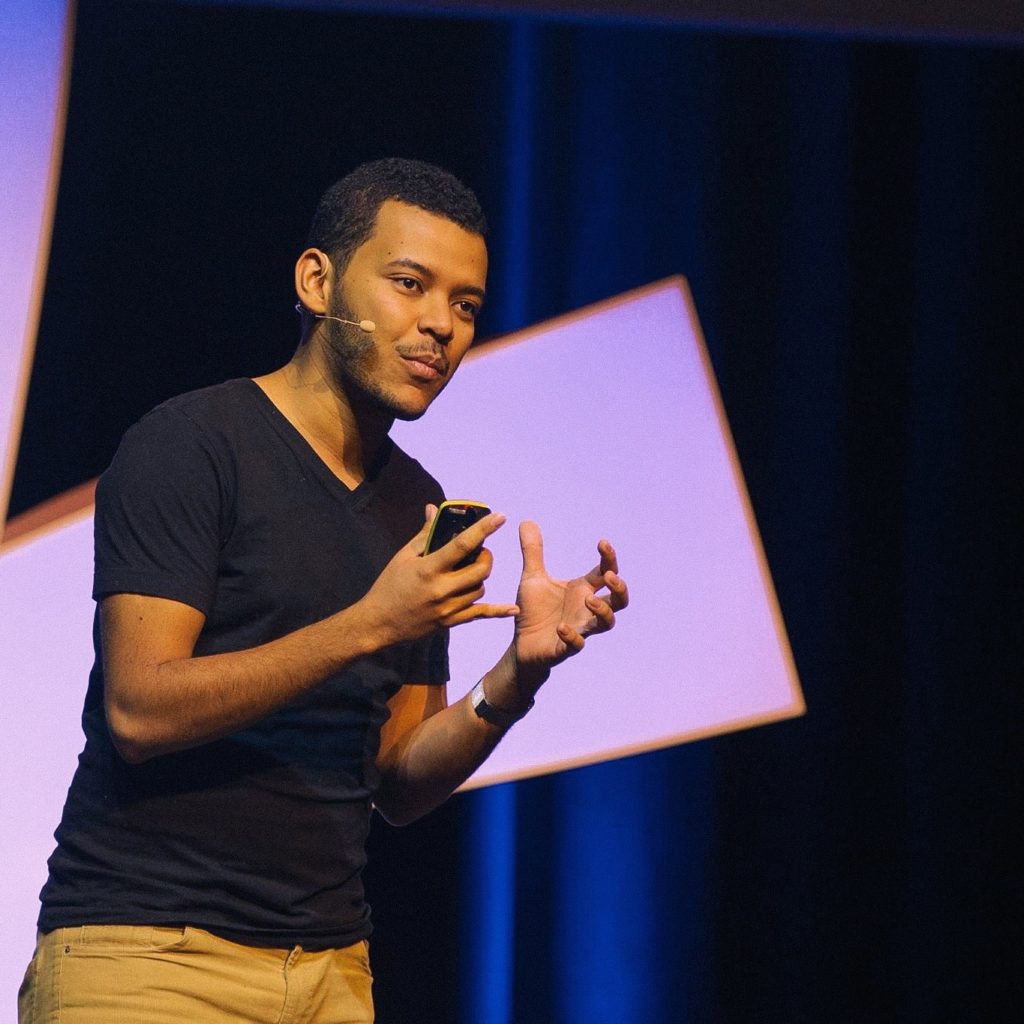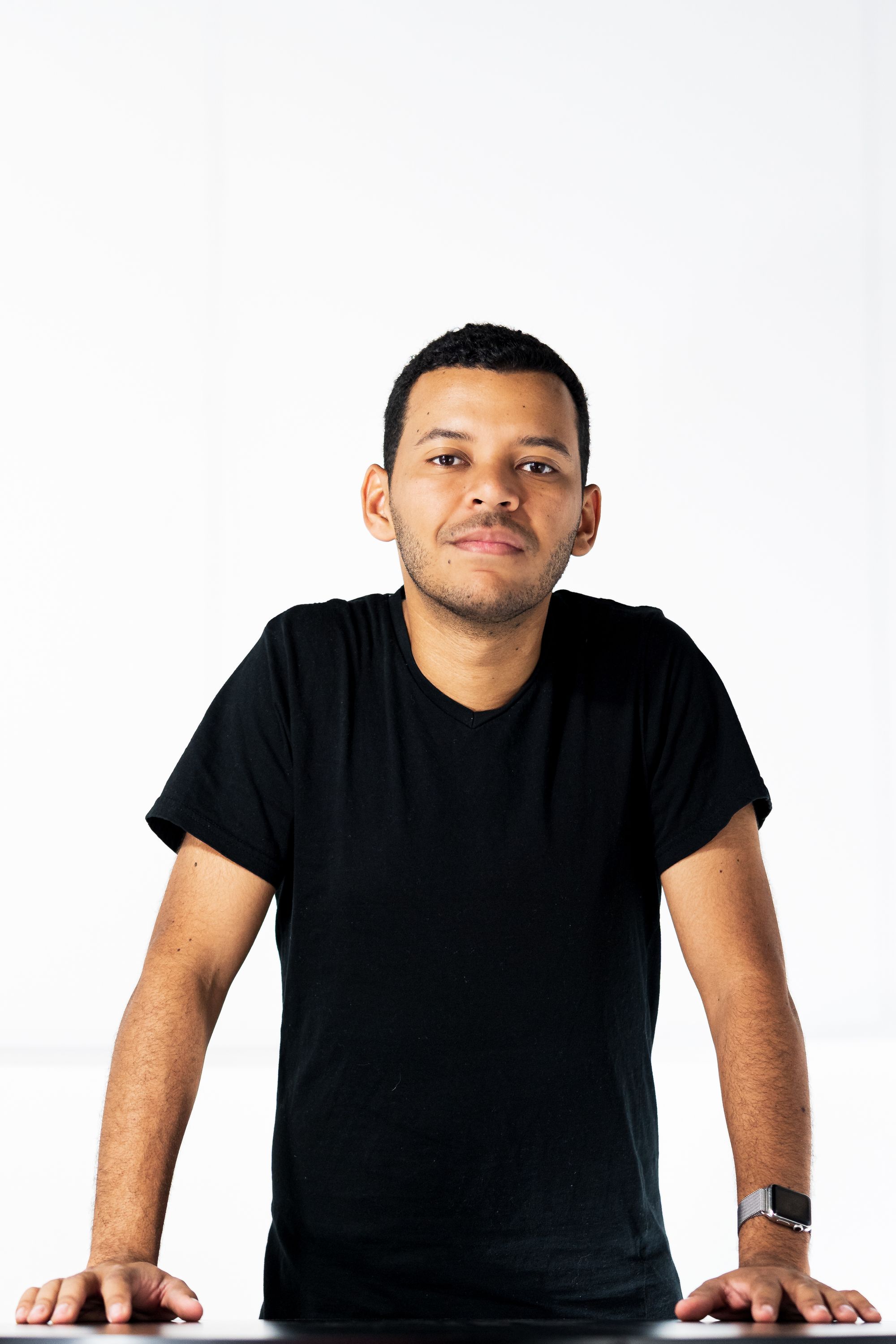In the media you'll see plenty of articles celebrating founders who have raised money from VCs, but can we talk about what happens next?
For example, what are some things that you should be mindful of when you raise your first round?
What are some common mistakes that founders make after raising money?

These types of questions and real, no BS convos are just a few of the many that are missing in the startup space – especially with founders like us.
Recently, we were able to have an unfiltered, no BS convo with Jose “Caya” Cayasso who is arguably one of the most influential entrepreneurs in the SaaS space.
Caya is an AfroLatino founder that was born and raised in Costa Rica. He later moved to New York once he was accepted into an accelerator based in America.
As the Founder and CEO of Slidebean, which is a cloud-based presentation tool software, he's been able to reach millions of users around the world and raise startup funding. Prior to Slidebean, Caya used his background in tech and design to run his own creative content agency, and even launched an iOS game that was hailed as the next Angry Birds by TechCrunch.
After completing two of the top accelerators – 500 Startups & DreamIt Ventures, Caya went on to expand his team, increased his revenue, scaled back, lost money, and eventually came back on top in his startup, stronger than ever.
Here on Mogul Millennial, Caya gets real about his startup journey, and drops gems that we can all soak up (no matter where you are in your business).
Keep reading to learn how he grew his users, the spending mistakes he made after raising his Seed round, and the biggest lesson he learned about hiring employees as a new founder.
What inspired you to create Slidebean?
Before Slidebean, I was really unfamiliar with the whole startup ecosystem. I was always into tech, and a bit of a geek, but I wasn’t really into the whole startup scene. A friend and I came up with this idea to build a mobile gaming platform using a location-based concept. This was back in 2012, and you know there were a couple of games in the app store but the app gaming space was still new. So we came up with this concept of our location-based platform and it was a multiplayer game. To give you an idea of how it worked, let’s say you were in New York playing against somebody in L.A. Each one of you would get advantages based on the city where you were, so the level where you were playing was inspired by your own city. The idea was really cool, but we had no idea of the whole venture capital concept or anything like that.
We were familiar with Kickstarter, so we launched a Kickstarter campaign. We met our Kickstarter goal, but then our story got picked up by TechCrunch, which I had never heard of before at the time.
After the TechCrunch reporter picked it up, things got crazy.
We started getting a lot of emails from investors asking if we were raising capital and whatnot. Again, this whole process was still very new to me. Long story short, we ended up going through a startup accelerator called DreamIt Ventures in New York and it was really a crash course for me in the startup scene. They taught me things like how to talk to investors, to understanding how raising capital works, and how pitch decks work.
In the end, we weren’t able to raise any money, but one of the cool learnings of that process was our capacity to make really cool design and graphics. The game was in development as we were in the accelerator, but one of the things that we could brag about in our investor deck and in our meetings was how cool the company looked and how cool the presentation of it was.
At the time, I would spend hours and hours on end, tweaking and building these really cool pitch decks that always gave off a great impression, and made us look good in our demo days. However, in the end, that company went out of business. We did end up launching the game and had a spike of downloads, but after that, it kind of died down so we closed that company.
During this process, I realized that not only pitch decks, but presentations in general, are frustrating to people. Most people in theses spaces are not graphic designers. Therefore, they have this complicated dilemma once they come across the white canvas. They not only need to figure out their content, but they have to figure out how it’s going to be arranged, and how it’s going to be displayed within their design. The whole process is very frustrating for me as a graphic designer, so I can only imagine how it is for everyone else.
So after my last company went out of business, I took some time to recover from that and then started assembling a new team to build out this new product which became Slidebean. I found my two co-founders, and then we started working on it.

How did you acquire your few first thousand customers?
A lot of our marketing dollars went on social media. At the time, it was really a different age for Facebook, because you could reach more people cheaper. We leveraged social media a lot to get attention from users.
Eventually, we started moving into paid marketing once we had a little money to spend. Google Ads was our first big breakthrough. I always point companies in similar spaces to go to Google Ads as one of their first attempts because it’s easy to set up, and you can see results really fast. Even though it’s really expensive, if you can make the economics of Google Ads work, then I think it’s worth it because Google Ads is one of the most effective ways to acquire customers. We made our first $20,000 in revenue from customers that came through Google Ads.
Fast forward to today, how are you acquiring customers now?
Our core sources of customers are coming from Google, no longer from paid ads, but from organic searches. But that end result of ranking organically is just a long and expensive process. It took years and a lot of work. I’ve also created blog posts around different topics around startups that have also helped us create credibility, ranking for our site, and brand authority.
If you’re a startup and you don’t have a lot of money or time, and you need customers right away, then Google Ads may not be the way to go. It’s something that you need to invest in early on, because it’s going to take months to start ranking for any keyword.
Now, our website gets over 250,000 visits per month, and most of them are from people that are finding us from our blog post content. Also, we get a lot of customers through YouTube.
We spent a good amount of time experimenting with YouTube, but it wasn’t until about a year ago when we finally found the right combination of content features, format, length, and other elements to make YouTube work in our favor.
How do you determine what’s working vs what’s not working in your biz?
I’m the CEO, but most of my time is spent with the marketing team. Even though my background is in tech, I had to figure out marketing and how to analyze the data from it. My two co-founders are more product people, and so the only person to do sales or marketing was me.
At Slidebean, we’re very diligent about tracking where customers are coming from.
We make sure that when we share content, that they have UTM tags, which tells us which campaign and which content customers are coming from. So we use that very diligently to make sure that any links that we place track us back to what’s working. We also survey our paid customers as well.
What have you found to be the most challenging part of your entrepreneurial journey?
We raised a small round after we completed the 500 Startups accelerator, and then after that, we raised a $250K round. That year was great, and all of our experiments in our business worked. We started growing super fast, had around 600% growth, just after we raised. Still at the seed stage of the company, we raised an extra $500K or so. With that $500K, we spent aggressively. We extended the product and marketing team, and kept accelerating.
But that time, it didn’t work so well.
Our churn was very high, and we weren’t really good at retaining customers at the time. This all wasn’t that big of a deal before because we’re just bringing in so many customers every month that it really didn’t matter as much. But as the user base grew bigger, churn became an issue for our company. We were spending aggressively and we were not paying enough attention to our churn.
If I had to do it again, I would be more careful. We were spending money on different tests and experiments to accelerate our user acquisition. I remember spending a bunch on podcasts and sponsoring videos – but they weren’t working.
We got to a point where we couldn’t acquire customers fast enough. So we entered a crossroads where we were running out of money – really fast.
We were burning the money that we raised too fast and the experiments we were testing wasn’t working. Most people would say that we could’ve just went out and raised more money, but we didn’t think we had the metrics to do that. So instead, we chose to scale the company down simply because again, we didn’t think that we had the metrics.
Scaling down was a critical infection point in the company. It was by far the toughest time because we have to let people go. It was the first time that I’ve have had to fire people that are doing good at their job. We had to make a decision to keep the most valuable parts of the team, but it was still really tough to do. For me as a founder when I ask people to quit their job and come join my company, they’re trusting me to make the right choices for the company so that we don’t have to go through this stage where we have to let people go, because otherwise, we’ll go out of business.
After doing that, we had to become profitable out of necessity, which we did. Our operation back then was maybe $80,000 a month or so that we were spending on the team and on other things. Also, around that time, the cash in the bank at the most critical month was around $60,000, so we had less than a month’s worth of runway in the bank.
Luckily, after we scaled down, we became profitable again.
Today we are at a much better place, we are profitable, and we’re growing faster. But still, we’re lucky to be at a point where raising money is an option for us, and not a need.
We were holding the need to raise money until we are sure that we know where to spend it. Raising money helps you grow faster, but it’s also a promise to these investors that your company can become “X” big, and that’s a challenge that we don’t have to deal with now.

What do you think you could’ve done differently?
I think how much time it took us to really care about churn and retention was a mistake; those are both things we should have focused on more early in the beginning.
Next, with the team and with hiring, I think we could’ve done things differently too. Now, we’re much slower to hire. First, we make sure budget-wise that we are going to be able to afford this person with an extra cushion in case we have a bad month or three. It’s important for us that we’ll still be able to hold their position if a bad month comes and that their job is not at risk. We also try to do a consulting project with any prospect we’re trying to hire. We’ll ask them to do a paid project in whatever area they’re going to be doing inside the company, just to understand their talents, their skill set, how they work, how they get along with the team, and things like that.
Next, firing fast is another thing that we look at. I remember seeing a lot of blogs talking about how you should hire slow and fire fast. It’s tough advice, but it’s true – it’s very valuable to understand and practice.
Lastly, we now focus a lot on our company culture. We have a position at our company called the Culture Manager, and it’s their job to keep everyone happy and excited about work. We’ve succeeded at creating a company culture and a work environment that our team loves and is excited about. We go out as friends beyond work often. However, this can make firing hard because you get close to people, but that’s where firing fast is important.
It’s important early on that you remove people that aren’t doing good work and that are infecting the company culture, instead of waiting until it’s too late.
